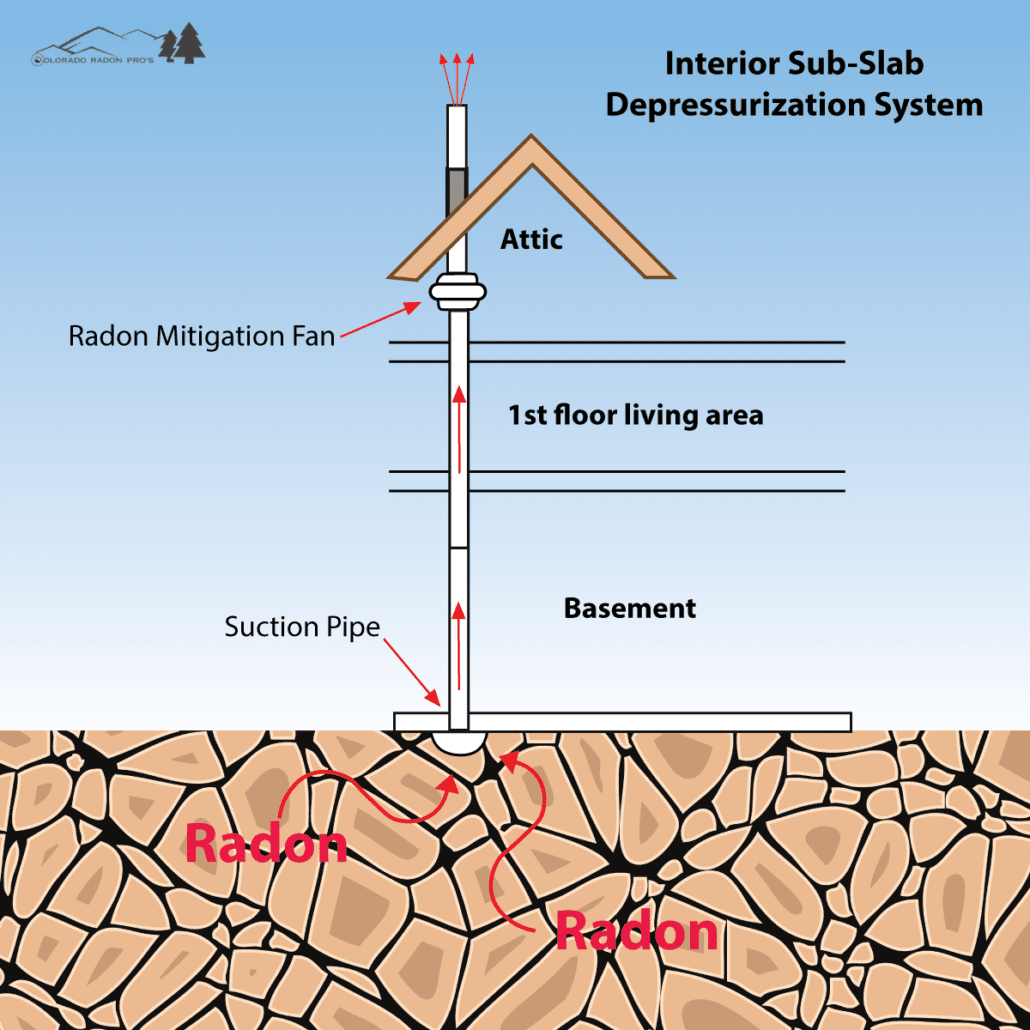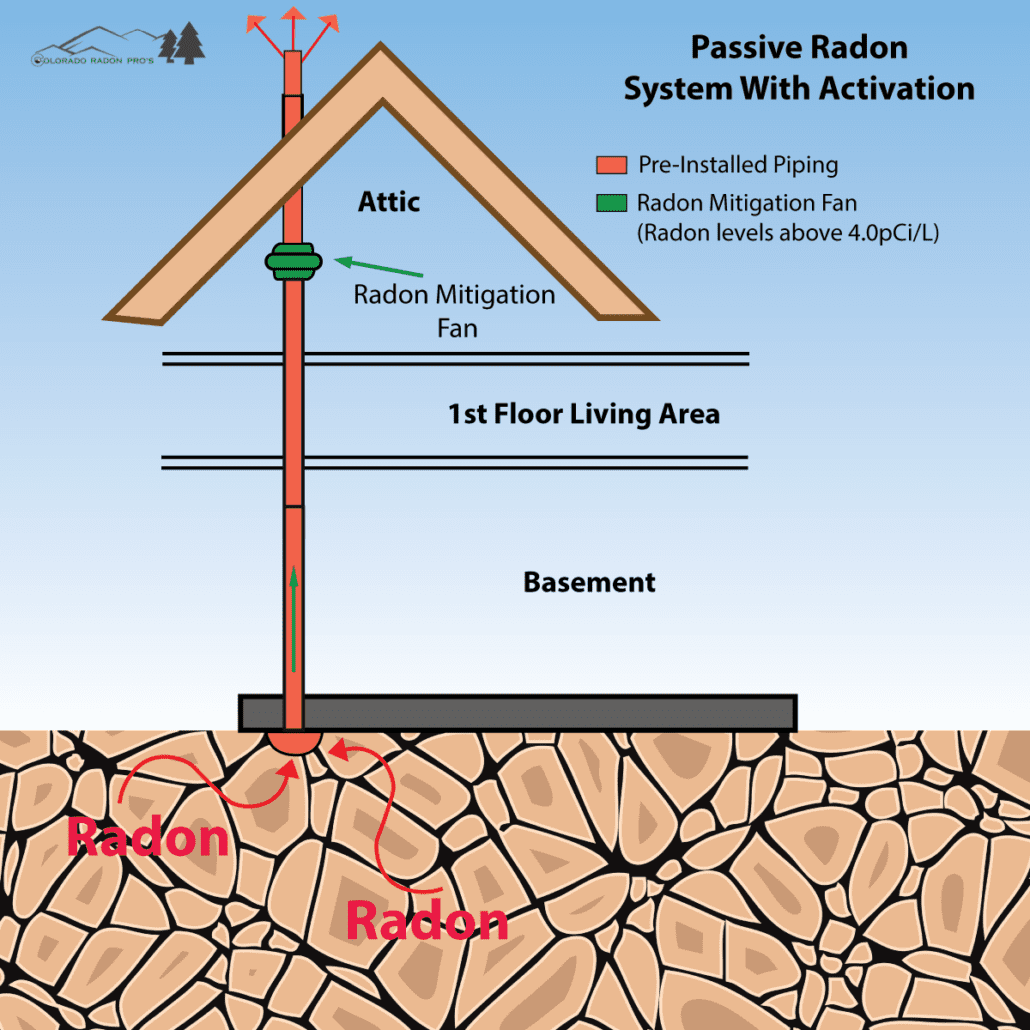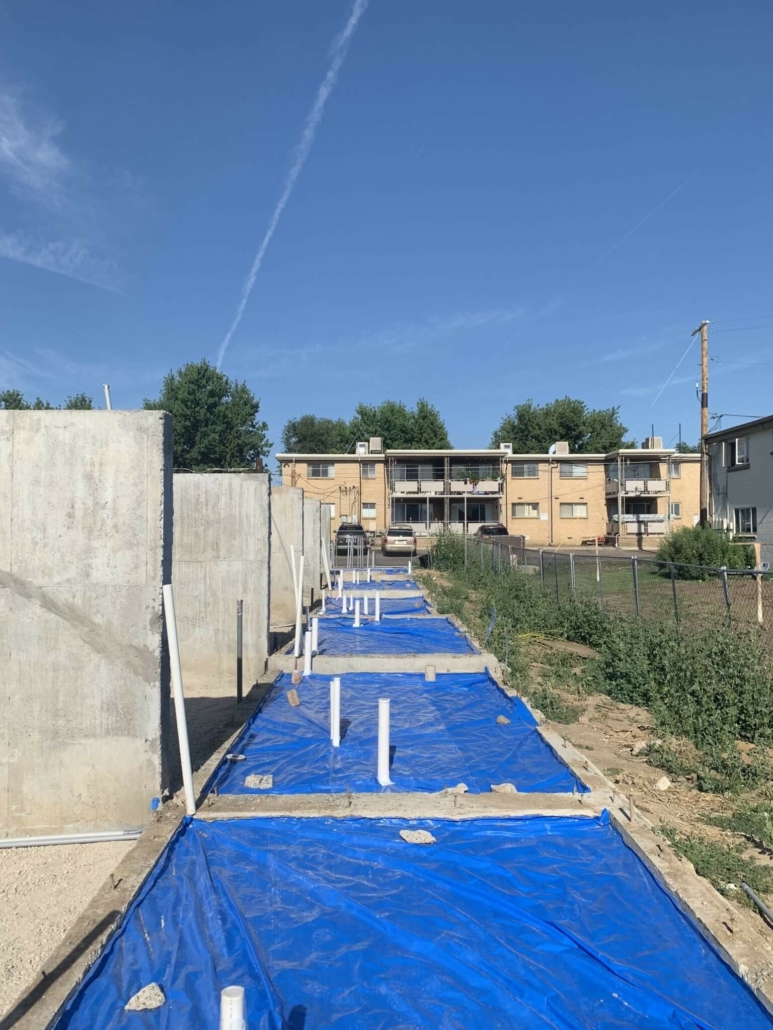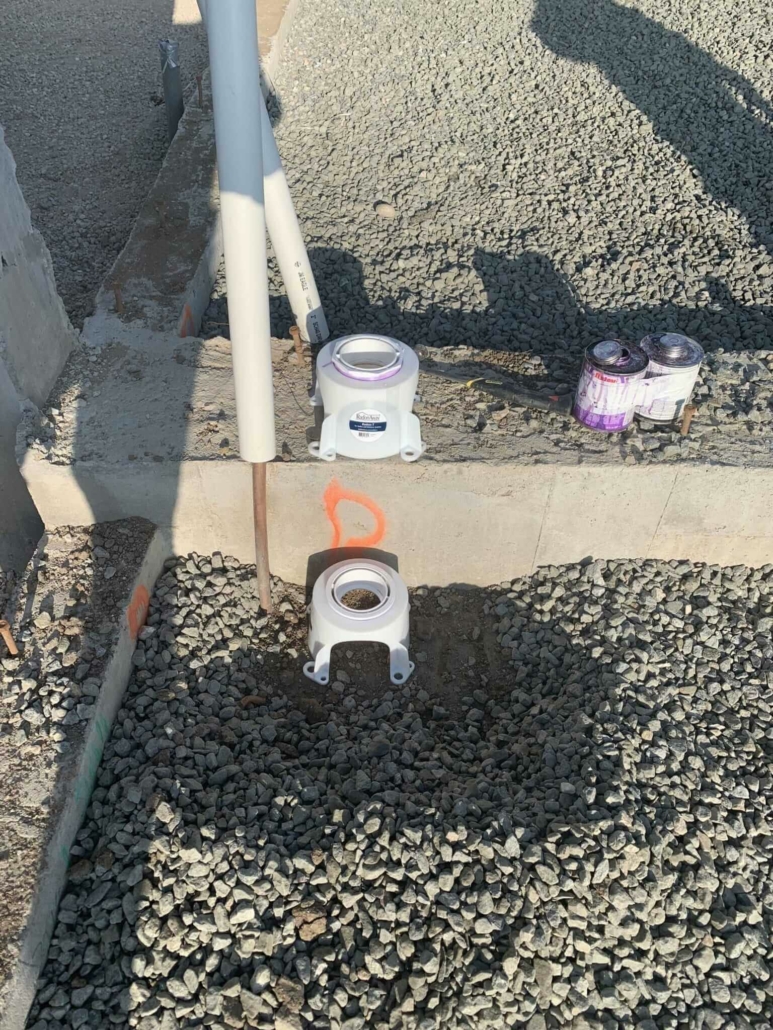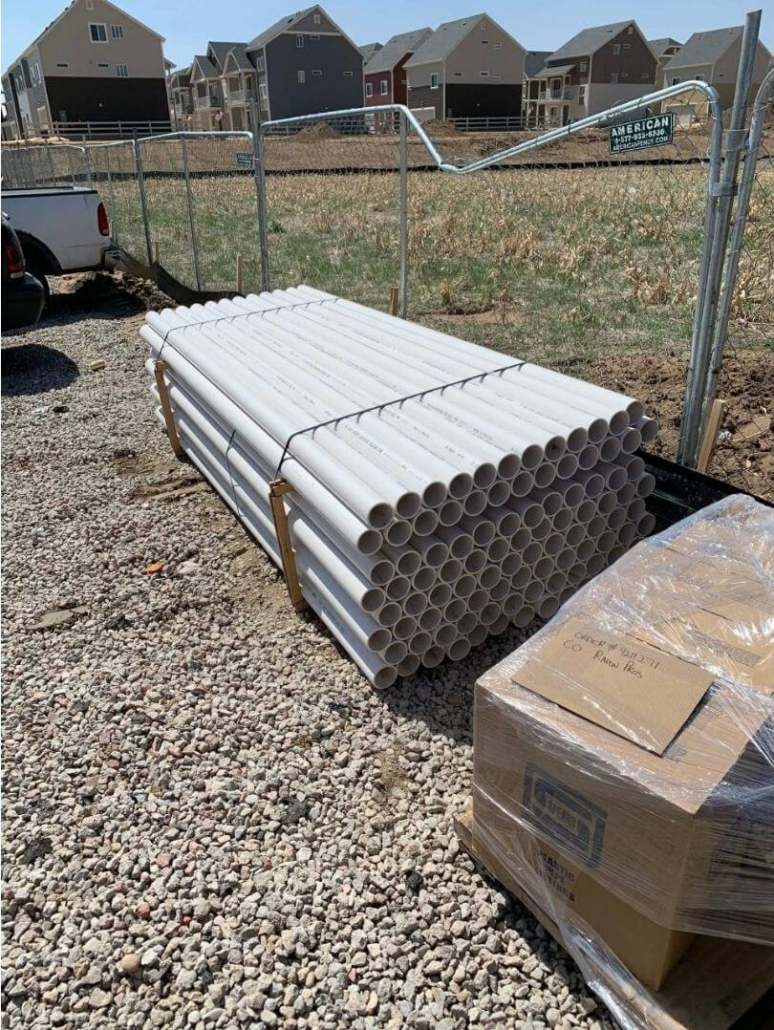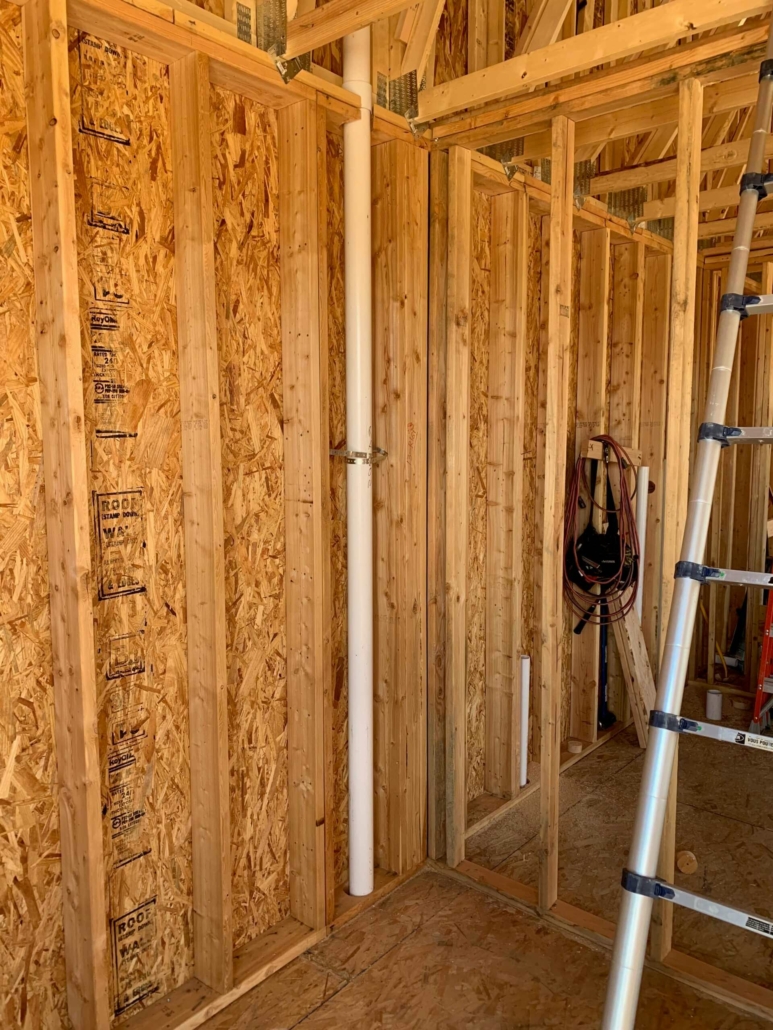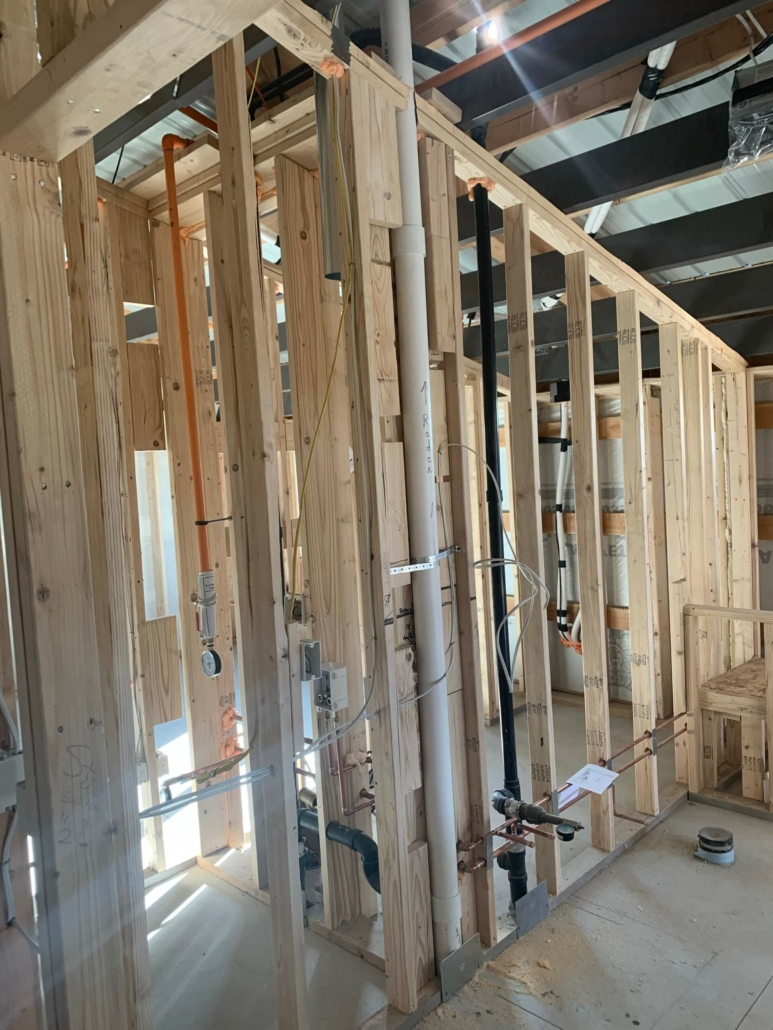Radon mitigation in Denver is extremely important because more than 52% of Colorado Radon Pros homes test high for elevated levels of radon gas. One of the best ways to perform radon mitigation, if possible, is to install a radon Resistant system in your new construction build. By installing the system during the building process, our professional radon mitigation technicians can hide the piping in the walls of the home (behind the drywall) and hide the fan in the attic. This new construction radon mitigation concept looks much better aesthetically, and many times, is actually more affordable.
New construction radon mitigation can be done a number of different ways. One way to perform new construction radon remediation is to lay the proper vapor barrier and connect to the drain-tile system before the concrete stab is poured. This is, of course, ideal because the potential soil gasses and radon can be mitigated more effectively when utilizing vapor barrier and drain-tile depressurization. However, if this is not possible because the thought or concept of radon mitigation did not come to fruition until after the slab is already poured, our new construction radon mitigation crew can adapt to the situation. Our professional radon mitigators can perform the radon abatement by simply treating the basement portion of the radon job the same as we would in a traditional, existing home or commercial property. Our team can either enter through the sump crock, or core through the slab, to utilize the drain-tile system and create maximum suction and soil depressurization under the slab and throughout the entire footprint of the proposed property. If the home does not have a sub-slab, interior drain-tile system, our team can effectively mitigate through what is known as sub-slab depressurization. This mitigation concept includes coring through the slab, creating a large under-slab suction pit, and ultimately drawing the radon from beneath the basement floor to vent it above the roof-line. Both of these concepts work in the same fashion, by creating active soil depressurization. This radon mitigation practice of active soil depressurization is extremely effective and in most cases, the most cost effective and functional way to mitigate radon from your home.

